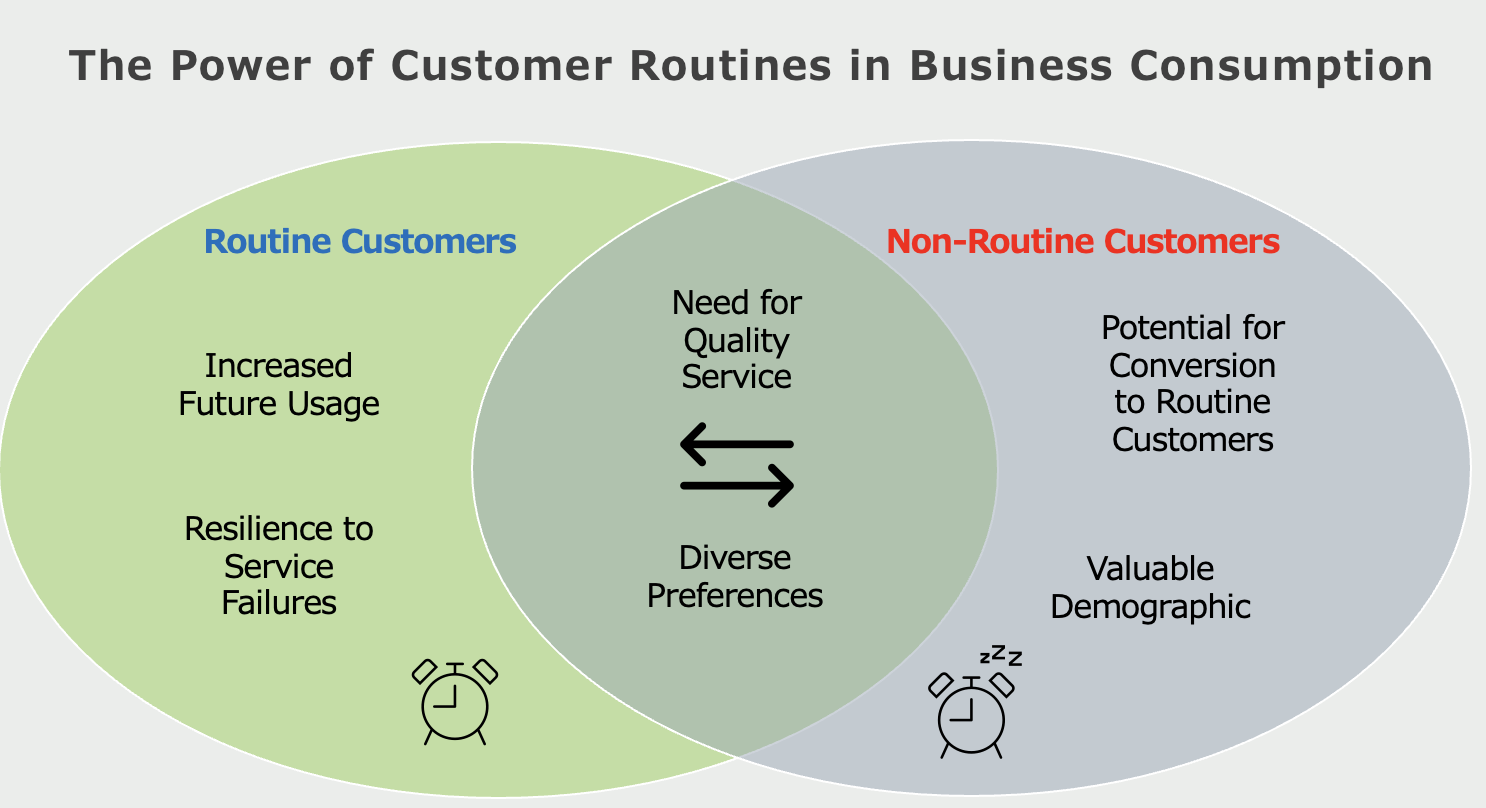
Identifying customer needs has always been a core marketing goal, but anticipating them just as they arise, could elevate a company to new heights. Research by Harvard Business School suggests that services seamlessly blending into a customer’s daily routine can boost a company’s profits and increase customer loyalty and tolerance to price fluctuations.
As we delve deeper into the era of big data and artificial intelligence (AI), businesses like Procter & Gamble, Adidas, and McDonald’s use these technologies to understand consumer behavior. Using customer routines presents an untapped potential to connect with consumers on a more personal level.
Leveraging AI lets companies identify the habits of regular users versus casual ones
Through AI and meticulous analysis, companies can discern the true intentions of habitual users versus casual ones.
This precision can assist businesses in tailoring their services to meet the specific needs of their most valued customers. Ascarza and her colleagues developed a model identifying these regular users and their value, providing a road map to drive customer-focused strategies.
The researchers tested their model in collaboration with a rideshare company in New York City. They tracked the usage patterns of some 2000 users, and created a “routineness score”. The score helped identify clusters of usage behavior, offering an insightful window into customer habits, preferences, and potential future engagements.
Routine customers, the study reveals, may be more resilient to changes such as price hikes or minor service disruptions. This kind of customer behavior doesn’t only apply to ride-sharing. Online retail and streaming services could similarly benefit from understanding and leveraging customer routines. For example, firms like Netflix and Amazon could use these insights to more accurately schedule their services or marketing strategies.

These findings suggest that understanding the customer’s daily routines and integrating your service into them could become a significant factor in the success of many businesses. As AI continues to penetrate various industries, it presents an immense potential to transform customer relationship management. The reality is that AI is quickly becoming a vital player across various sectors, underscoring the need to integrate this powerful tool into business models.
AI is already reshaping society as we know it
It’s not just companies that stand to gain from tracking routines. Policymakers can benefit greatly from this model, as it could aid in traffic planning, infrastructure design, and policy creation.
“Understanding patterns of behavior in transport could be super relevant for policymakers,” Ascarza said.
This underlines the fact that AI isn’t just reshaping business – it’s beginning to redefine society as a whole.
In conclusion, companies and policymakers need to embrace the opportunities AI bring to the table. While the march of AI may seem daunting to some, for those willing to adapt and innovate, it heralds an era of unprecedented opportunities and the potential to connect with customers on a deeper, more meaningful level.
Opinion – A New Frontier in Customer Relationship Management:
As we forge ahead in the era of digitization, our understanding of customer behavior is evolving, becoming increasingly nuanced and complex. A new study, which dissects the power of customer routines in shaping business consumption, exemplifies this evolution and sheds light on a previously untapped area of CRM.
The concept of routines in this study is defined as “repeated behaviors with recurring, temporal structures.” It’s the habitual cup of coffee we buy each morning or the rideshare app we use for our daily commute. The patterns are etched into our daily lives and, as the study suggests, understanding these patterns could be a game-changer for businesses.
The uniqueness of this study lies in its methodological approach. The researchers used advanced statistical modeling, specifically Bayesian nonparametric Gaussian processes, to construct a sophisticated model of customer routines. In simpler terms, they developed an innovative tool to analyze how and when we use particular services regularly. The researchers also distinguished between routine and non-routine usage, a crucial factor in understanding customer behavior.

The findings of this study are nothing short of revelatory. It turns out, customers who have established routines with a service are more likely to continue using that service in the future. This goes hand-in-hand with increased activity rates. Moreover, these customers are also more resilient to service failures – they are less likely to abandon the service if something goes wrong. The profound implications these findings have for CRM cannot be overstated.
From a business perspective, it suggests that identifying and catering to routine customers should be a priority. These are the customers that are more likely to stick around and demonstrate a higher tolerance for hiccups in service. They provide businesses with a reliable stream of revenue and, because of their habitual use, serve as excellent potential advocates for the service.
Furthermore, the research shows potential for segmentation and targeting based on the types of routines customers have. In an age where personalization is key to customer satisfaction, this level of segmentation could allow businesses to tailor their services and marketing efforts with unprecedented precision.
However, it’s important to note that while powerful, this focus on routines should not overshadow the necessity to attract and cater to non-routine or casual customers. These consumers may not demonstrate the same degree of loyalty as routine customers, but they represent a crucial demographic that businesses need to convert into habitual users.
In conclusion, this study is a testament to the power of routines in driving customer behavior. It underscores the significance of continually pushing the boundaries of our understanding of CRM. With the insights gained from such innovative research, businesses can better adapt to meet the ever-evolving needs and wants of their customers. We’ve entered an era where not just understanding, but predicting and shaping customer behavior is the new competitive advantage. This groundbreaking research is just the tip of the iceberg.
Reference:
Dew, Ryan and Ascarza, Eva and Netzer, Oded and Sicherman, Nachum, Detecting Routines: Implications for Ridesharing CRM (February 12, 2023). Available at SSRN: https://ssrn.com/abstract=3982612 or http://dx.doi.org/10.2139/ssrn.3982612

